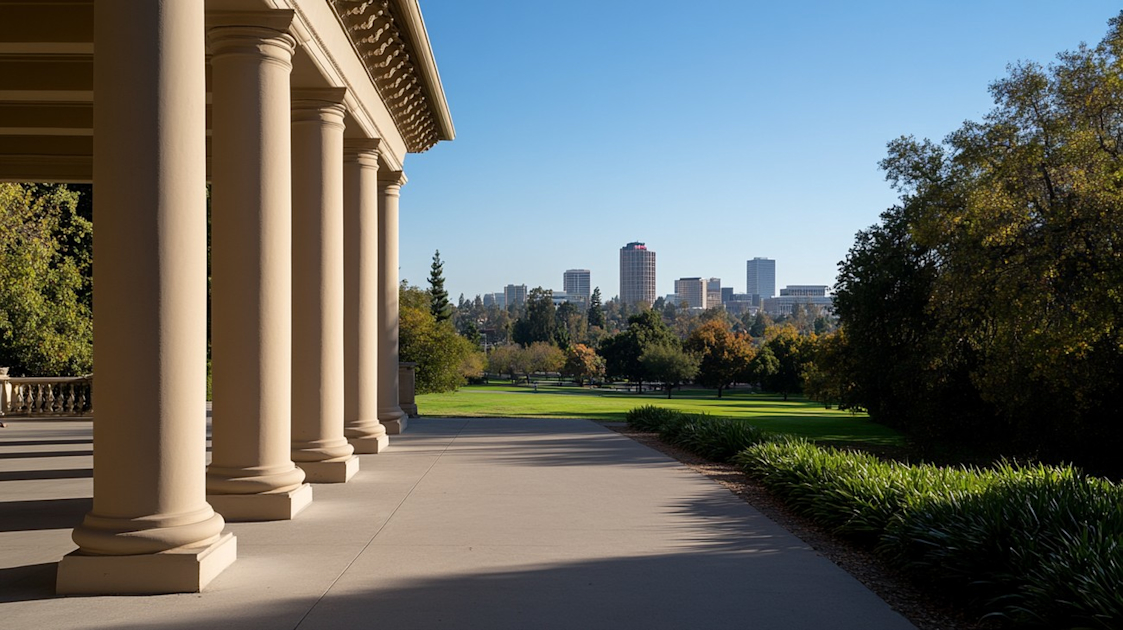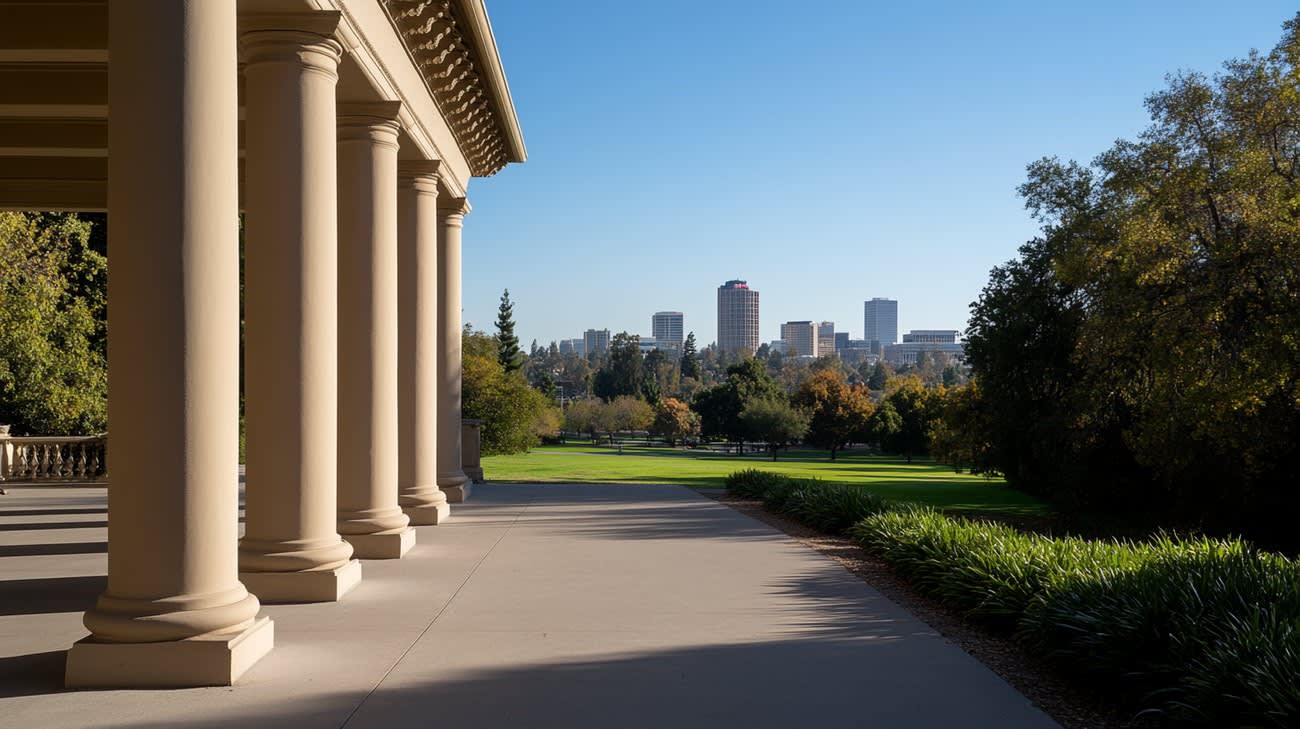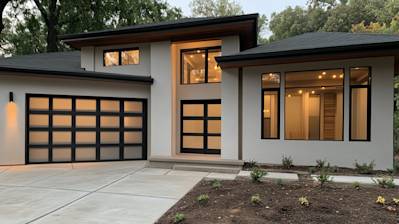Transforming Space with Stucco
Among diverse architectural materials available, one that continues to age gracefully, bringing timeless elegance to any space, is stucco. This plaster type, applied wet and hardens to solid, is most notable in creating decorative structures like stucco columns. These columns, revered for their ornamental prowess, are pivotal in enhancing both indoor and outdoor aesthetics, leaving a refined architectural footprint.
While stucco columns are undisputedly elegant, their magic lies beneath the exterior, maturing from a mixture of cement, lime, and silica. This article aims to delve deeper into this exquisite architectural marvel, detailing how it transforms any space into a sight to behold.
The Foundations of Stucco
Stucco's history is firmly rooted in ancient times, but still trending even in today's modern construction. Its flexible nature, durability and cost-effectiveness, make stucco a favorite for many architects, builders, and homeowners. But when married to architectural structures like columns, stucco exudes a higher degree of allure, making your home or business a beautiful masterpiece.
Ingredients of Stucco
- Water
- Cement
- Lime
- Sand
These elementary components meld together to bring life to stucco columns. It's also noteworthy that newer variations include synthetic materials added to improve strength and flexibility.
The Artistry of Stucco Columns
Decorative elements like stucco columns breathe life and character into a space. They serve multiple design purposes, from supporting large structures to erecting attractive entryways, sprucing up patios, or enhancing the indoor surroundings.
There's a rainbow of textures to explore with stucco columns. With so many styles to pick from, finding the one that correctly mirrors your architectural vision becomes easy.
Stucco Column Styles
- Corinthian
- Tuscan
- Doric
- ionic
- Composite
These styles reflect different periods in architectural history. Regardless of your preference, one thing is sure: stucco columns will imbue your space with unique elegance and grace.
Fashioning Stucco Columns: The Process
The process of creating stucco columns is like witnessing an artistry in motion. It requires a blend of skills and careful attention to detail to achieve the precise texture, style, and finish.
Steps in Creating Stucco Columns
- Design: The first step involves planning the design on paper, sketching the chosen style, and taking accurate measurements.
- Framework: This involves building a wooden or metal scaffold to act as a base for the column.
- Application of Stucco: After mixing stucco components, the stucco is applied onto the framework.
- Artistic Detailing: Skilled craftsmen shape the column to replicate the desired style.
- Curing & Finishing: The column is left to dry and harden then painted as per the designer's choice.
The Benefits of Stucco Columns
Investing in stucco columns isn't a mere extravagant architectural exploit. It holds compelling benefits that extend beyond beauty and includes:
- Value Addition: Stucco columns elevate the aesthetic appeal of a building and subsequently raise its market value.
- Durability: Stucco is known for its durability. It withstands harsh weather conditions and termite attacks.
- Easy Maintenance: Unlike other materials, stucco needs minimal maintenance. An occasional clean and paint touch-ups keep it in top-notch condition.
- Versatility: Stucco columns can be designed in various styles, shapes, and sizes to match the overall architecture of a building.
- Affordability: Compared to other luxurious architectural aspects, stucco is highly affordable.
With these benefits, stucco columns can be a promising feature of your home or business venue, combining practicality with beauty.

Frequently Asked Questions about Stucco Columns
Can you Paint Stucco Columns?
Yes, you can indeed paint stucco columns. In fact, painting can enhance the longevity of stucco columns and provide an opportunity to refresh their look as per your aesthetic. It's advisable to use acrylic paint, as it allows stucco to 'breathe' and moisture to escape.
How do I Clean Stucco Columns?
Stucco columns can be cleaned using a gentle water pressure wash. Avoid harsh chemicals or abrasive materials because they may damage the surface. Use a soft bristle brush for stubborn spots and ensure the column is completely dry after the wash to prevent water seepage.
How to Repair Stucco Columns?
Minor cracks on stucco columns can be tended to with a siliconized acrylic caulk. For larger cracks or damages, a stucco patch mix might be required. If damage is extensive, it's best to call in a professional as improper repair can lead to more serious problems down the line.
What's the Cost of Stucco Columns?
The cost of stucco columns can vary greatly depending on the size, style, complexity of design, and your geographical location. It will also depend on whether you hire a professional or opt to do it yourself. On average, for professional installation, you should budget anywhere between $6 to $9 per square foot.
Can I install Stucco Columns myself?
Although possible, it's not recommended to install stucco columns yourself unless you have considerable experience with masonry or plastering. Stucco application is a labor-intensive process and requires a thorough understanding of the materials and technique to ensure durability and aesthetics.
What's the Lifespan of Stucco Columns?
When properly installed and maintained, stucco columns can last for many decades. However, their lifespan can be influenced by factors such as weather condition, exposure to water, quality of installation and maintenance done over the years.
How to Maintain Stucco Columns?
Regularly cleaning your stucco columns, monitoring for cracks or other damages, conducting timely repair, and repainting when necessary are key to maintaining stucco columns. Maintenance will not only enhance the aesthetic appeal but also extend the lifespan of your stucco columns.
Can Stucco Columns be used outdoors?
Stucco columns are very versatile and can indeed be used outdoors. They are resistant to fire, rot, and insects. However, they need to be properly sealed to protect them from moisture and freeze/thaw damage in colder climates.

Pros of Stucco Columns
Aesthetically Pleasing
One of the significant advantages of stucco columns is their aesthetic appeal. They offer a sleek and clean design that can fit into almost any architectural style, from modern to rustic or traditional. Their subtle texture adds personality and charm, thereby enhancing the architectural character of a building or house.
Durable and Long-lasting
Stucco columns are highly durable and known to stand the test of time. When applied correctly, stucco can last for decades without any significant maintenance, making it a cost-effective choice for property owners. The durability of stucco also means that it is resistant to damage from weather elements like wind, rain, and even earthquakes, thus offering a level of reliability.
Easy to Maintain
The ease of maintenance is among the most appreciated pros of stucco columns. Since stucco is essentially a low-maintenance material, it hardly requires any upkeep activities. In case minor damages like small cracks or chips occur, they can be easily fixed without the need for professional help.
Energy Efficient
Stucco provides excellent insulation properties, making it an energy-efficient construction material. In climates where heating or cooling is a significant concern, stucco columns can help regulate the indoor temperature and reduce dependence on artificial heating or cooling systems. This not only results in cost savings on energy bills but also contributes to a sustainable and environment-friendly lifestyle.
Versatile in design
Stucco columns offer excellent versatility in design. They can be shaped to nearly any design the owner or architect desires, allowing you to bend and mold the columns to fit within the design aesthetics of your home or building. Furthermore, stucco can be painted in virtually any color, providing additional design flexibility.
Cons of Stucco Columns
Installation Process and Cost
As much as the stucco columns are beneficial, their installation process is quite labor-intensive and requires skill and expertise. This process can increase the overall project time and costs, making stucco more expensive than other materials. Moreover, the application of stucco is weather dependent. Wet and cold conditions can significantly affect the durability of the columns.
Difficult to Modify
While stucco columns are known for their durability and longevity, these attributes make it challenging to modify or remodel the stucco. Any changes or modifications to stucco columns after they have been installed would require a considerable amount of time and effort as the process involves chipping away the hardened stucco and then reapplying a new layer.
Can Crack Over Time
Despite stucco’s durability, it is not entirely immune to damage. Over time and under certain conditions, stucco may develop cracks. These are often due to changes in temperature and moisture as well as the settling or shifting of a building's foundation. If these cracks are not repaired promptly, they could lead to more severe structural issues.
Moisture Issues
Although stucco is resistant to many forms of damage, it is not completely impervious to water. If not properly installed and adequately sealed, water can seep into the stucco, leading to significant issues such as expensive structural repairs or even the growth of mold.
Limited in some architectural styles
While stucco columns can fit into many architectural styles, there are some styles where stucco might feel out of place. For instance, in more traditional, antique, or historical styles, stucco columns may not be suitable because they can come off as too modern or sleek. Hence, the suitability of stucco columns can be highly specific to architectural design and personal preference.

Myths and Misconceptions about Stucco Columns
While stucco is a popular choice for home decoration, particularly for columns, there are many misconceptions that deter people from its usage. This section is designed to debunk these myths and provide a clear perspective on this versatile and durable material.
Stucco is Only Suitable for Mediterranean or Spanish Architectural Styles
This is one of the most common misconceptions about stucco. While it is true that stucco has a long history of use in Mediterranean and Spanish architecture, this doesn't mean it's limited to only these styles. In fact, the application of stucco is highly versatile and can be used in various architectural styles, including Modern, Contemporary, Tudor, and many more.
Customizability of Stucco
What makes stucco so adaptable to different styles is its customizability. Stucco can be mixed with pigments for a wide spectrum of colors and can be textured or smoothed to fit different design aesthetics. Therefore, stucco columns can be molded to reflect the overall architectural style of any building, whether traditional or modern.
Stucco Isn't Durable
Another common misconception is that stucco is weak and not durable. However, stucco is incredibly strong and durable when applied and maintained correctly. Some stucco buildings and columns have lasted for centuries, which clearly indicates the longevity of this material.
Impact of Weather Conditions
Stucco is highly resistant to various weather conditions. It's not easily damaged by sun, wind, or rain, which makes it an ideal choice for columns located outdoors. Even in areas with high humidity, stucco can be a good choice as long as the proper waterproofing measures are taken during installation.
Stucco Requires High Maintenance
Contrary to this myth, stucco columns require minimal maintenance. Regular visual inspections and occasional cleanings are sufficient to keep them in good shape. If cracks or other damages do occur, repair is quite straightforward and can often be completed by homeowners themselves.
Maintenance Vs Repair
Although minor maintenance tasks are required, it doesn't mean stucco is a high-maintenance material. Tasks like cleaning or painting are relatively simple and do not require expert attention. Repairing damage, on the other hand, such as filling in cracks or repairing significant weather damage, might necessitate professional intervention, but such situations are rare and generally avoidable with appropriate preventative maintenance.
Stucco Can't Be Painted
Many think that stucco can't be painted, but that's not true. Stucco can be painted in any color, providing homeowners a great way to refresh their columns and match them with the house's exterior. But it's important to use a paint that is breathable and high in quality to prevent future flaking and peeling.
Painting Procedure
When painting stucco columns, it's critical to follow the right procedure. The column must first be cleaned and dried. Next, apply a primer suitable for stucco, then finish with two coats of paint.
Stucco Columns Are Expensive
While stucco may have a higher upfront cost than other materials, its durability and low maintenance needs make it a cost-effective choice in the long run. Plus, it enhances the aesthetic appeal and value of your home, which is a significant advantage.
Value for Money
When calculating the costs associated with stucco columns, one must also consider the potential return on investment. This is often overlooked but is an important factor. Stucco adds a unique aesthetic appeal to your home that can significantly increase its market value.
Understanding these common myths and misconceptions about stucco columns can help homeowners make informed decisions about whether this material is right for them. In conclusion, stucco columns are versatile, durable, low maintenance, customizable, and can be a cost-effective choice for many types of homes.
Summary
Upon circling back to stucco columns, it's evident that they play a significant role in both interior and exterior building designs. They're not just about structural support, stucco columns add to the aesthetic value by providing a touch of grandeur, elegance, and visual charm. Versatile in nature, they can effortlessly blend with different architecture styles without losing their inherent appeal.
On the practical side, stucco columns are low maintenance and highly durable. They're able to stand up to various weather conditions, which is important for outside use. When it comes to cost-effectiveness, they definitely have an edge, especially considering their longevity and minimal upkeep needs. Using stucco columns can be a great way to save money in the long run while ensuring your building stands out aesthetically.
As trends evolve, it's amazing to see how stucco columns remain a classic element in different building designs. They have gone outside the traditional norms and have been integrated into modern decor and architecture. Whether you are looking to preserve a historical look or aim for a contemporary vibe, stucco columns are an element that delivers functionality, style, and value. Who would've thought that such a classic element could adapt so seamlessly into modern times?
About Atlas Stucco
At Atlas Stucco of Sacramento, CA, we're more than just a stucco company. We're a dedicated team of craftsmen passionate about delivering incredible quality for our clients. For years, we've served Sacramento and the surrounding areas, turning ordinary homes and businesses into extraordinary works of art through our stucco work. With us, you get a trusted partner who truly cares about bringing your vision to life. After all, your satisfaction is our greatest measure of success. We can't wait to show you what we can do!
Tags: stucco, columns, exterior design,








